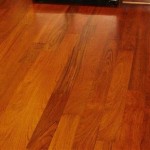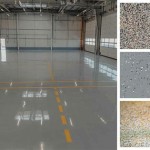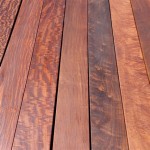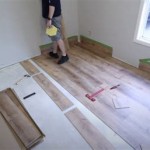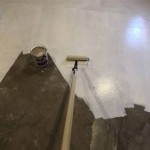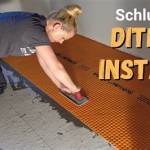How To Get Glue Off Floor After Removing Carpet
Removing carpet often leaves behind a sticky residue of adhesive glue. This can be a significant challenge, particularly when preparing a floor for a new covering or simply attempting to restore the original flooring material. Effective removal requires understanding the type of adhesive used, choosing the appropriate removal method, and employing the necessary tools and safety precautions. This article outlines a comprehensive guide to removing carpet glue effectively and safely from various floor types.
Identifying the Type of Carpet Glue
Before initiating any cleaning process, identifying the type of glue used is crucial. Different adhesive compositions respond differently to various solvents and removal techniques. Common types include: water-based adhesives, solvent-based adhesives, and pressure-sensitive adhesives. Water-based adhesives are typically easier to remove, often responding to heat and water. Solvent-based adhesives are more resilient and may require chemical solvents for effective removal. Pressure-sensitive adhesives, commonly found with carpet tiles, can sometimes be removed with mechanical methods but may also necessitate solvent assistance.
Visual inspection can sometimes provide clues. For instance, a brittle, yellowish glue might suggest a type of solvent-based adhesive. A softer, more pliable glue may point to a water-based or pressure-sensitive variety. However, without specific knowledge of the adhesive used during installation, it is generally advisable to test removal methods in an inconspicuous area first. This allows for assessing the effectiveness of the chosen method and evaluating any potential damage to the underlying flooring.
Furthermore, identifying the flooring material itself is essential. Hardwood, concrete, tile, and vinyl each require different approaches to avoid damage. For example, harsh solvents that are safe for concrete could damage or discolor hardwood flooring. Understanding both the adhesive and flooring materials is the cornerstone of successful glue removal.
Methods for Removing Carpet Glue
Several methods can be employed to remove carpet glue, ranging from relatively simple to more involved techniques. The most appropriate method depends on the type of glue, the flooring material, and the extent of the adhesive residue. Generally, starting with the least aggressive method and progressing to stronger solvents or mechanical means is recommended.
1. Heat Gun and Scraper: This method is often effective for softening stubborn glue and making it easier to scrape away. A heat gun should be used with caution to avoid scorching or damaging the flooring. The heat gun should be held a few inches away from the glue, moving it back and forth to evenly soften the adhesive. Once the glue is pliable, a plastic scraper or putty knife can be used to gently lift the softened glue from the surface. Metal scrapers can be used, but they present a higher risk of scratching the floor, particularly softer materials like vinyl or wood. This process might require multiple passes with the heat gun and scraper to fully remove the glue residue.
2. Hot Water and Soap: For water-based adhesives, hot water and a mild soap solution can be surprisingly effective. Soaking the glue residue with hot, soapy water for a few minutes can soften the adhesive, making it easier to scrape away. This method is particularly suitable for linoleum, vinyl, and some types of tile. Overly saturating wood flooring should be avoided, as this can cause warping or water damage. After scraping, the area should be thoroughly rinsed with clean water and dried to prevent any remaining soap residue from attracting dirt.
3. Chemical Solvents: When heat and water prove ineffective, chemical solvents may be necessary. A variety of solvents are available, including mineral spirits, adhesive removers specifically designed for carpet glue, and citrus-based cleaners. When using chemical solvents, it is crucial to follow the manufacturer's instructions carefully and to provide adequate ventilation. Many solvents emit fumes that can be harmful if inhaled. A respirator or mask may be necessary. The solvent should be tested in an inconspicuous area before applying it to the entire surface to ensure it does not damage or discolor the flooring. After applying the solvent, allow it to dwell for the recommended time before scraping away the softened glue. Once the glue is removed, the area should be thoroughly cleaned to remove any remaining solvent residue.
4. Mechanical Removal: For large areas or particularly stubborn glue residue, mechanical methods like floor scrapers or grinders may be necessary. These tools can quickly remove large amounts of adhesive, but they also carry a higher risk of damaging the flooring. When using mechanical methods, it is essential to exercise caution and to use the appropriate abrasive pads or blades for the flooring material. Dust control is also a significant consideration when using mechanical tools. A vacuum system should be used to collect dust and debris to prevent it from spreading throughout the work area. Mechanical removal should typically be reserved for concrete floors or when preparing a subfloor for a new flooring installation.
5. Using Adhesive Remover: Commercial adhesive removers are specifically formulated to dissolve carpet glue. These products usually contain solvents that break down the adhesive's chemical bonds, making it easier to lift from the floor. Select an adhesive remover that is compatible with your flooring material, as some formulations can damage certain surfaces like hardwood or vinyl. Application usually involves spraying or pouring the remover onto the affected area, allowing it to dwell for the recommended time (as specified on the product label), and then scraping away the softened glue. Always wear gloves and eye protection when using adhesive removers, and ensure proper ventilation to avoid inhaling harmful fumes. After removal, clean the floor thoroughly with a damp cloth to remove any remaining residue.
Safety Precautions and Tools
Safety should always be the top priority when removing carpet glue. Many of the methods and chemicals involved can pose risks if not handled properly. Essential safety precautions include wearing appropriate personal protective equipment (PPE), ensuring adequate ventilation, and following the manufacturer's instructions for all products used.
Protective eyewear, such as safety glasses or goggles, is crucial to protect the eyes from splashes and debris. Gloves should be worn to protect the hands from exposure to solvents and abrasives. A respirator or mask may be necessary when working with chemical solvents, particularly in poorly ventilated areas. Long sleeves and pants should also be worn to minimize skin exposure.
Adequate ventilation is essential when using chemical solvents. Open windows and doors to allow fresh air to circulate. If working in a confined space, a fan can be used to improve ventilation. Avoid using open flames or smoking in the work area, as many solvents are flammable.
Tools for removing carpet glue include:
- Plastic scrapers or putty knives (for softening glue)
- Metal scrapers (for softened glue but used with extreme caution on delicate surfaces)
- Heat gun (for softening the glue)
- Spray bottles (for applying water, soap, or solvent)
- Buckets (for water and cleaning solutions)
- Mops and cloths (for cleaning and drying)
- Floor scraper (for large areas)
- Grinders (with the appropriate abrasive pads for concrete)
- Vacuum with hose attachment
Before beginning any removal process, it is always advisable to test the chosen method and product in an inconspicuous area to ensure it does not damage the flooring material. This will help prevent any unwanted discoloration or damage to the overall aesthetic of the floor.
Another important consideration is the proper disposal of used solvents, rags, and glue residue. Check local regulations for proper disposal methods. Many solvents are considered hazardous waste and should be disposed of accordingly. Keep all chemicals and tools out of reach of children and pets.
Taking these safety precautions and using the appropriate tools can significantly reduce the risk of injury and damage during the carpet glue removal process.
Dealing with glue removal from floors after carpet removal can be tedious, but with the right methods and precautions, it can be achieved effectively. Patience and methodical approach are key to a successful outcome.

How To Remove Carpet Glue From Wood Concrete Floors Ultimate Diy Guide

How To Remove Carpet Glue Goo Gone

How To Remove Carpet Glue And Floor Adhesive View Our Tips

Flooring How Can I Remove Carpet Adhesive From Hardwood Floors Home Improvement Stack Exchange

Removing Glue Or Adhesive From Hardwood Floors The Speckled Goat

Removing Glue Or Adhesive From Hardwood Floors The Speckled Goat

How To Remove Carpet Glue From Concrete Floor Step By Guide

How To Remove Carpet Glue From Concrete 4 Proven Ways Network

How To Remove Carpet Glue From Concrete Floor Step By Guide

How To Remove Carpet Glue From Hardwood Floors Servicewhale
See Also


